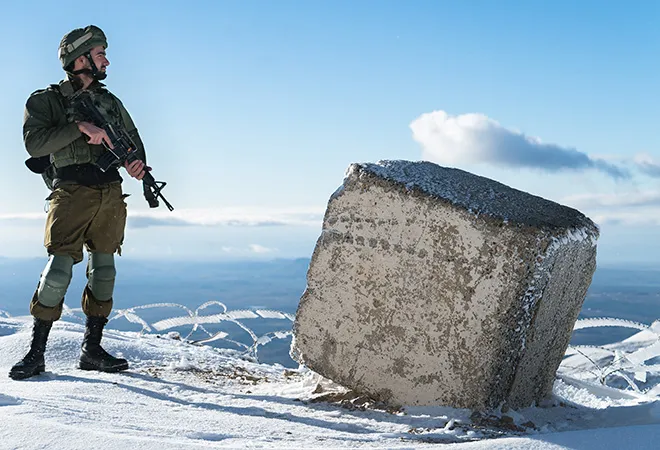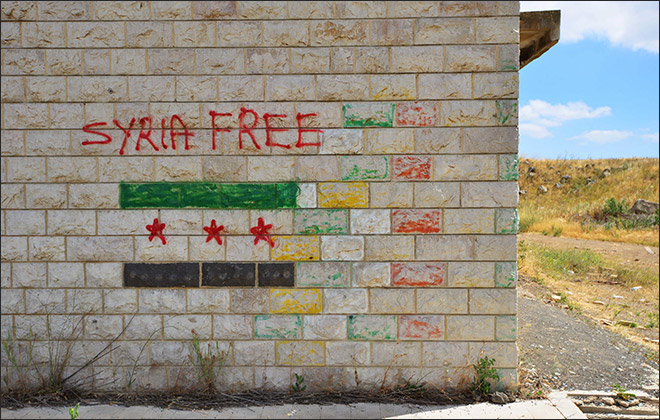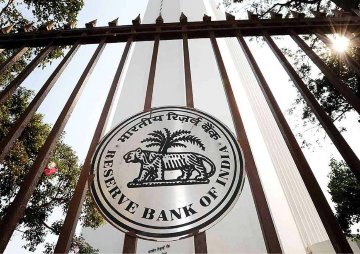
On 10 February, Israel intercepted an Iranian drone flying over its territory and in response launched a range of attacks on the area near Palmyra in Syria from where the drone allegedly took flight. Reacting to Israel, the Syrians downed an Israeli F-16 returning from the attack, a first since 1980s. The Israelis fired back with a vengeance at multiple Syrian and Iranian targets within Syria.
Israeli Prime Minister Benjamin Netanyahu said on the 11 February that “yesterday we dealt severe blows to the Iranian and Syrian forces.” “We made it unequivocally clear to everyone that our rules of action have not changed one bit. We will continue to strike at every attempt to strike at us. This has been our policy and it will remain our policy,” he said.
The series of counterattacks between Israel and Syria over the last few days have rung alarm bells across West Asia. The events prove, thus far a relatively dormant Syria-Israel armistice line in the Golan Heights, might become a theatre of another conflict with global ramifications.
These exchanges of fire may well be remembered as a starting point of the next possible war in West Asia. Some observers of the region have long feared that the conflict between Israel and Iran would be played out in the south of Syria.
Israel: Forever an enemy
In front of the citadel in Damascus, an oversize bronze statue of the founder of Ayyubid dynasty, Salahdin, is meant to awe and inspire. Salahdin, a Kurdish general, is a legend in the Arab world for he retook Jerusalem from the crusaders in 1137.
The tale of his victory is a mobilising tool for Iran, Syria and the Hizbollah in Lebanon which call themselves ‘Resistance to Israel’. The story of a mighty yet benign warrior motivates and instills confidence amongst the foot soldiers of the resistance. The message is — however unlikely it may seem, one day all of Palestine would come under the control of the Islamic world. This includes the lands Israel currently exists on and occupies.
In several Arab-Israeli wars, the former has gained little. Perhaps, understanding the goal is more unrealistic than advocated. Before the Syrian war, which began in 2011, Bashar al-Assad was trying to crack a deal through the West with Tel Aviv. His offer was dilution of ties with Iran in lieu of the Golan Heights.
Home to hundreds of thousands of Palestinians post 1948, Syria along with other Arabs vehemently supported the Palestinian cause. It became personal in the six-day war imposed by Israel in 1967 when the Jewish state occupied a large chunk of Syria’s Golan Heights in the south of the country.
Since, Israel is sitting on the Syrian land.
Israel is the eternal enemy for factual and imagined sins.
Home to hundreds of thousands of Palestinians post 1948, Syria along with other Arabs vehemently supported the Palestinian cause. It became personal in the six-day war imposed by Israel in 1967 when the Jewish state occupied a large chunk of Syria’s Golan Heights in the south of the country.
The Baath Party earnestly believes that the US and Europe supported the opposition in the Syrian war against a secular Assad, to eventually guard Israel’s interests in the region. While it is true that Washington massively tilts towards Israel in the conflict, the uprising in Syria was a result of a lack of political and economic reforms in Syria.
‘Israel is to blame for the war’ narrative has been promoted widely in the Syrian press.
An assertive Assad is depicted with an equally head-strong chief of the Hizbollah; Hassan Nasrallah, in posters and hoardings across the country. From Damascus to Aleppo, the text on the banners claims the foundation of the alliance to be their mutual resistance to ‘hegemonic’ Israel.
While Syrians are tired of the prolonged war and divided over who to pin the blame on — for instance, a bulk of Syrian refugees accuse the regime while those who found relative safety in the regime held areas consider it less problematic — but, Israel is a common enemy.
Mohammad Sharif runs a bakery on the road to Homs from Damascus. A staunch Assad follower, he believes his government’s line. In August last year, he spoke to me about the significance of a Syria, Iran and Hizbollah alliance.
“Had it not been for Iran and Hizbollah’s support, the Israelis would have occupied us too during the war,” he said.
A segment of nationalist Syrians have also welcomed the Hizbollah and sing the group’s praises for protecting it from the Jihadists and Tel Aviv.
The conflict enabled the group and other Iranian-backed militias to entrench themselves in the city of Quneitra, in the Syrian-controlled part of the Golan.
 Writing on the wall — Quneitra city | Flickr user orientalizing
Writing on the wall — Quneitra city | Flickr user orientalizing
The Hezbollah reportedly has 10,000 fighters in southern Syria. The figure has been disputed but the Hizbollah’s desire to have a long-term foothold in the region isn’t.
Hezbollah has also used Quneitra as a base to train Iran-backed forces fighting in other conflicts in the region. Ahmad, a foot soldier for an Iranian-backed Iraqi paramilitary group called Al-Badr, told me in Baghdad, he was flown to Quneitra, along with other fighters, to be trained by Lebanese Hezbollah in a camp within miles of the Israeli frontier.
“We received three months of training in Quneitra by Hezbollah. They are very good with technology and weapons,” he said.
Russia, the US and Jordan signed a Memorandum of Principles in November that expanded an earlier ceasefire agreement for the southwestern triangle bordering Israel and Jordan and called for “the reduction, and ultimate elimination” of foreign fighters from the area. On the ground though, hostilities have increased.
In late December 2017, Assad’s men seized Beit Jinn pocket near the Israeli-controlled Golan. This effectively forced the Syrian rebels in this area to retreat.
Israel, on the other hand, has been feeding these rebels. Under the pretext of humanitarian assistance, Israeli defence forces or the IDF pick up locals and armed men in need of a hospital and treat them. They are taken to — among other nearby facilities — the multispecialty Galilee hospital in Nahariya, which is only a few miles from the Lebanese border.
Ocampo Smadar, the head nurse in the Galilee hospital, says Israeli-run buses pick up those in need of medical care in the Golan, including fighters, and bring them to hospitals in Israel.
In late December 2017, Assad’s men seized Beit Jinn pocket near the Israeli-controlled Golan. This effectively forced the Syrian rebels in this area to retreat.
So far, the hospital has provided health care to 1,600 Syrians. Israel hopes it reflects its sensitive side to the world but in fact that it is a ploy to build friendly pockets in the Golan, and is not lost on observers.
Perhaps precautionary, but these activities reinforce the deep mistrust of Israel in Syria. It is cemented by structured efforts of the Syrian regime but dominantly by Israel’s reluctance to give up the Golan.
Fearing Israel may come under pressure to return Golan as part of a future peace deal with Syria, Israeli PM Benjamin Netanyahu has said, “The Golan Heights will remain in the hands of Israel forever.”
Before the clashes in February, Israeli forces had carried out at least 100 airstrikes in Syria. Israel’s former air force chief admitted that the IDF targeted weapon shipments and arms convoys being delivered by Iran to the Syrian army and the Hezbollah.
Ofer Zalzberg, a senior analyst with the International Crisis Group, weighs in via email.
“The Israeli government's assessment is that Hezbollah/Iranian presence near the armistice line
is bound to lead to the establishment of offensive infrastructure in the area,” he wrote.
“Such infrastructure can later be used for attrition attacks on Israeli civilians,” Zalzberg added.
Israel wants to contain the Hizbollah by striking its weapon depots.
The party of god — the Hizbollah — is confident of its abilities. And, General Elias Farhat of the Lebanese Army warns Israel of any misadventure.
“It will not be a war either side can win but the Hizbollah has the capacity to destroy major Israeli cities,” he told me in Lebanon’s capital Beirut.
Israel and Lebanon look at mutual annihilation if there were to be another war between the arch enemies. A base in south Syria helps Iran and the Hizbollah to fight on another front.
Syria could have been dealt with had Israel, and rightly so, handed over the Golan, but now with Iran’s pre-eminence in Damascus, that chance is gone.
Israel’s adamant behaviour is as much to blame for igniting fire in the Golan as Iran’s stubborn ‘Death to Israel’ call.
Crisis in West Asia is a circle. Where ever it starts, it always stops at the Arab-Israeli conflict.
The views expressed above belong to the author(s). ORF research and analyses now available on Telegram! Click here to access our curated content — blogs, longforms and interviews.



 On 10 February, Israel intercepted an Iranian drone flying over its territory and in response launched a range of attacks on the area near Palmyra in Syria from where the drone allegedly took flight. Reacting to Israel, the Syrians downed an Israeli F-16 returning from the attack, a first since 1980s. The Israelis fired back with a vengeance at multiple Syrian and Iranian targets within Syria.
Israeli Prime Minister Benjamin Netanyahu said on the 11 February that “yesterday we dealt severe blows to the Iranian and Syrian forces.” “We made it unequivocally clear to everyone that our rules of action have not changed one bit. We will continue to strike at every attempt to strike at us. This has been our policy and it will remain our policy,” he said.
The series of counterattacks between Israel and Syria over the last few days have rung alarm bells across West Asia. The events prove, thus far a relatively dormant Syria-Israel armistice line in the Golan Heights, might become a theatre of another conflict with global ramifications.
These exchanges of fire may well be remembered as a starting point of the next possible war in West Asia. Some observers of the region have long feared that the conflict between Israel and Iran would be played out in the south of Syria.
On 10 February, Israel intercepted an Iranian drone flying over its territory and in response launched a range of attacks on the area near Palmyra in Syria from where the drone allegedly took flight. Reacting to Israel, the Syrians downed an Israeli F-16 returning from the attack, a first since 1980s. The Israelis fired back with a vengeance at multiple Syrian and Iranian targets within Syria.
Israeli Prime Minister Benjamin Netanyahu said on the 11 February that “yesterday we dealt severe blows to the Iranian and Syrian forces.” “We made it unequivocally clear to everyone that our rules of action have not changed one bit. We will continue to strike at every attempt to strike at us. This has been our policy and it will remain our policy,” he said.
The series of counterattacks between Israel and Syria over the last few days have rung alarm bells across West Asia. The events prove, thus far a relatively dormant Syria-Israel armistice line in the Golan Heights, might become a theatre of another conflict with global ramifications.
These exchanges of fire may well be remembered as a starting point of the next possible war in West Asia. Some observers of the region have long feared that the conflict between Israel and Iran would be played out in the south of Syria.
 Writing on the wall — Quneitra city | Flickr user orientalizing
Writing on the wall — Quneitra city | Flickr user orientalizing PREV
PREV


